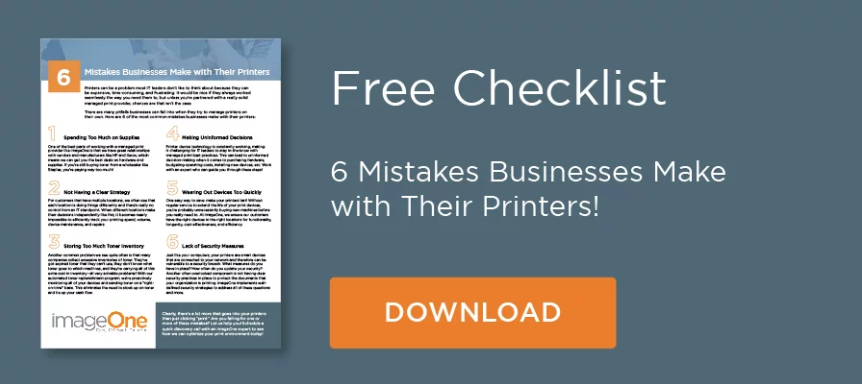One common question Managed Print Service (MPS) providers hear when pitching a new print management program to potential customers is: “What is a CPP and what exactly is included in the price?
It’s a great question. But first, let’s quickly clarify that different print management companies may call this model other things—Cost Per Page (CPP), Price Per Page (PPP), Click Rate, etc.
What is a CPP, PPP or Click Rate?
These phrases all refer to a payment model where businesses are billed (usually monthly) per page printed rather than charged a fixed monthly or annual rate.
Most MPS partners charge organizations two CPPs for every billing cycle—a Mono CPP for black and white prints and a Color CPP for color prints. Since color pages cost the MPS service more to maintain, the Color CPP is generally more expensive than the Mono.
{{cta(‘c6f2c7a2-22b3-4374-ae3a-ea4369f164f7′,’justifycenter’)}}
Now for the big question at hand. When a company is billed by cost per page, which services, products, equipment, etc. will count towards that price?
- Toner: All toner refills are included within your CPP. Most MPS programs even offer proactive toner monitoring. This means that the MPS provider will closely watch your toner levels. When the toner gets low, the MPS provider will automatically order and ship you a new refill cartridge just in time for a replacement.Since Mono printers only use a single color cartridge (black) vs. four with Color (cyan, magenta, yellow and black), Mono devices will ultimately require fewer cartridges. This is why Color CPPs are typically priced higher.
- Parts: The CPP will cover you if any part of your printer breaks or needs replacement. Though the MPS provider proactively monitors common issues, it’s usually the customer who calls us when something goes wrong. Then we’ll be on the way to fix it!
- Labor: If a technician comes to your office to replace a part, clean the copier screen, fix a paper jam, etc. it’ll be fully covered by the CPP.
Why Do Some Devices Have Different CPPs?
The cost per page can vary significantly between devices because each model has a unique toner SKU(s). As toner can wildly differ both in price and print yield (the estimated number of pages a toner cartridge can produce before running out) the overall CPP price also fluctuates.
However, if a customer has a large fleet with various models, most managed print providers can blend the CPPs together. That way, you’ll only see two CPPs— Mono and Color—when billing time comes around.
Should I Choose a Monthly Fee or CPP?
Lastly, why can’t an MPS provider just charge a flat monthly fee vs. a CPP? For most clients, a CPP has significant advantages for them as well as the managed print team.
For the MPS, it’s all about risk. The more a customer prints, the more toner, parts, and labor are required. If an MPS company offers a flat fee model and incorrectly estimates the number of pages or maintenance, they could quickly find themselves underwater.
If the MPS provider charges a flat rate, they will always calculate high to offset that risk. These extra costs then get passed down to the client.
With a CPP, customers will never pay for pages that are never printed. Without the MPS company relying on estimated page volumes, the customer will save money on print by paying precisely what they output every month—an especially beneficial perk for businesses in seasonal industries.
Overall, the cost per page model is a win-win. Next time you print a page and later pay for it, you’ll know exactly where that money is going.
Want to learn more about how a managed print service provider can save your business money and help it run more efficiently than ever? Contact the experts at imageOne! Schedule a 15-minute, no-obligation consultation today!
One common question Managed Print Service (MPS) providers hear when pitching a new print management program to potential customers is: “What is a CPP and what exactly is included in the price? Connect with me on Twitter and LinkedIn and keep up with my company imageOne. Check out my website or some of my other work here.





